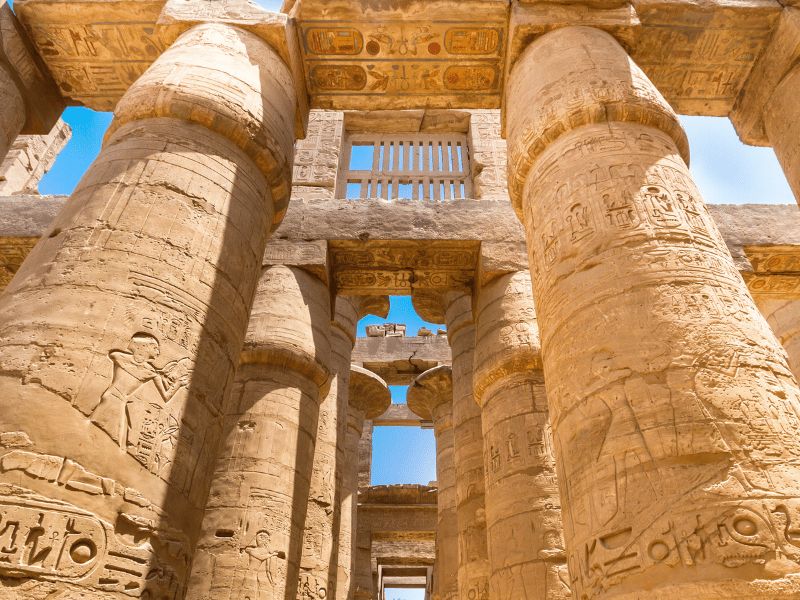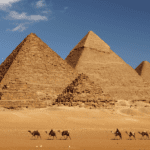A Brief History of Construction
Karnak Temple was initiated around 2000 BC by Pharaoh Senusret I of the Twelfth dynasty who had the central avenue of the Great Temple defined. It was built and enlarged over a period of 1300 years by successive pharaohs who added new shrines, pylons, and other structures in different architectural styles. Though construction activity continued at Karnak through to the Ptolomaic period, the largest structures date back to the New Kingdom.
- Place: Karnak Temple
- Country: Egypt
- Governorate: Luxor Governorate
- Age: Over 3000 years old
- Population: Tourist site with no permanent residents
- Discovered by: Initially discovered and used by Ancient Egyptians
- Famous for: It is among the most important religious sites in Egypt and the largest religious site known to have been built by man
- Nearby locations: Luxor Temple, Luxor Museum
Architectural Splendour
The Karnak Temple complex covers over 100 hectares and contains many outstanding structures including the Great Hypostyle Hall which is the largest room in the world supported by pillars. This immense hall, measuring 134m by 278m, contains 134 massive sandstone columns in sixteen rows, with the tallest columns being 25m in height. Other notable structures include the 47m high Second Pylon and Montu chapel which houses two colossal ram-headed sphinx statues. The scale and beauty of these structures solidify Karnak’s position amongst the most extraordinary monuments from antiquity.








Religious Significance
As the main cult place of the Theban Triad of Amun, Mut and Khonsu and the most important temple of Ancient Egypt, Karnak played a pivotal role in Egyptian religious practices for over a millennium. It served as a place of pilgrimage where festivals were celebrated and sacred dramas enacted. Though Amun’s cult flourished during the New Kingdom, the worship of earlier deities such as Montu continued at Karnak. The variety and scale of structures demonstrates Egypt’s religious diversity as well as Amun-Ra’s supremacy over other gods during the New Kingdom period.
Cultural Landmark
Today, the remaining structures at Karnak continue to awe visitors with their distinctive architecture and extensive reliefs and hieroglyphic inscriptions. Designated as a UNESCO World Heritage Site since 1979, it attracts millions of tourists each year and is the second most visited historical site in Egypt after Giza. Its endurance through floods and wars over three millennia stands as a testament to Ancient Egypt’s remarkable achievements in engineering and building construction. Karnak Temple has become intertwined with Egyptian cultural identity and remains essential for understanding Pharaonic civilization as one of the greatest cultural landmarks of antiquity.
In Conclusion
The sprawling Karnak Temple complex leaves an indelible mark as one of the most impressive architectural and archaeological sites that paint a vivid picture of the political and religious life of Egyptians. Its marvelous structures effectively communicate the grandeur and diligence of Egyptian civilization for posterity. A visit here is a must for anyone keen on understanding ancient Egypt at its peak.



